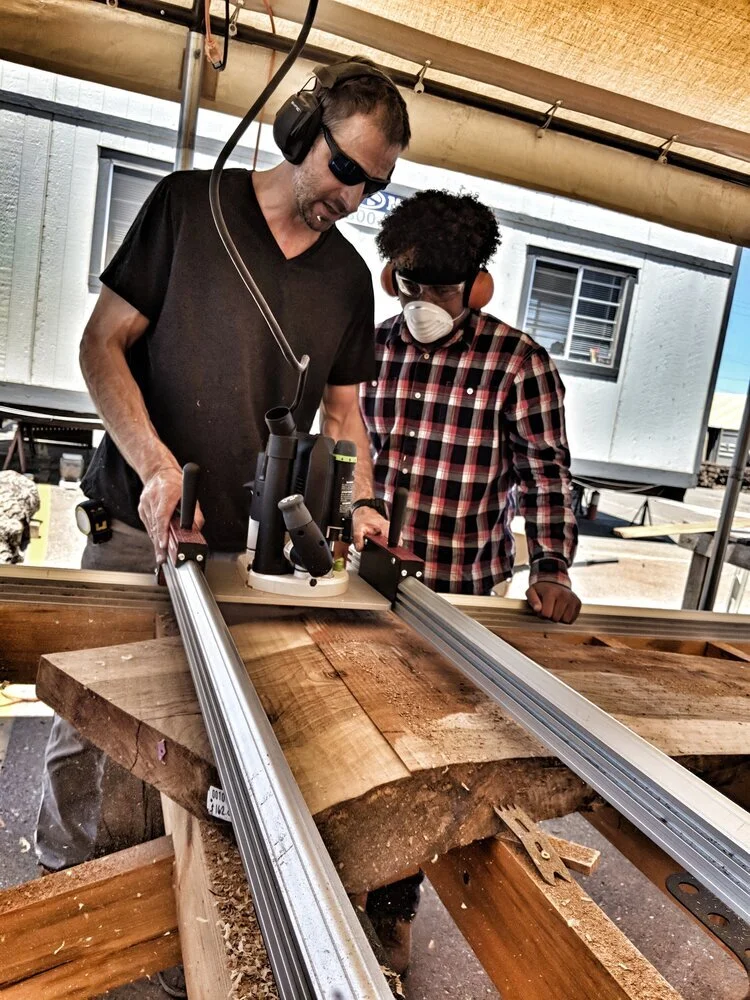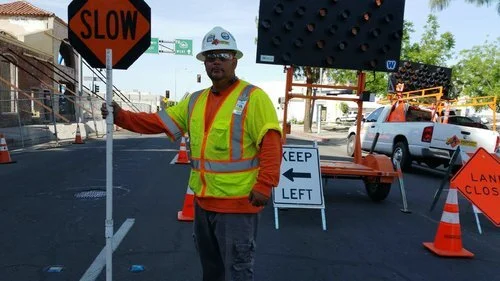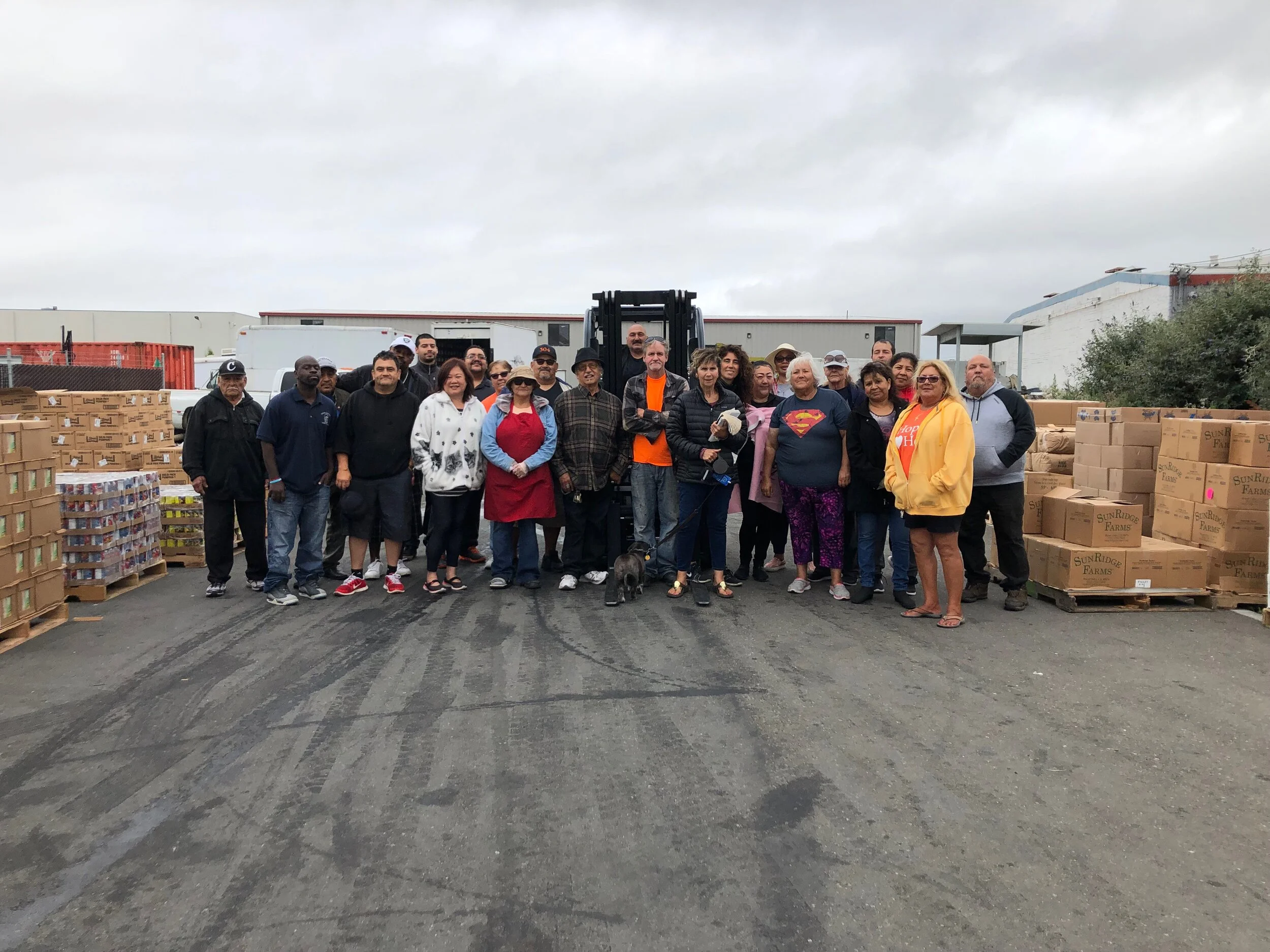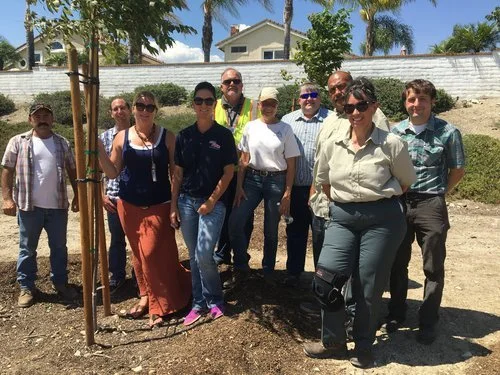Using $1.25 million from the Low-Carbon Economy Workforce program, the Expanding Energy Storage and Microgrid Training and Certification project is increasing the number of participating Electrical Joint Apprenticeship Training Centers from six to 21 centers located across the State. These training centers will help electricians and apprentices earn a certification demonstrating they have the skills to safely handle and diagnose modern energy storage systems and battery technologies.
Long Beach Urban Wood Recovery Apprenticeship Program Prepares Youth for the Future Workforce
Funded in part by a nearly $1,000,000 grant from California Department of Forestry and Fire Protection’s Urban and Community Forestry Program, the Conservation Corps of Long Beach (CCLB) is implementing an urban wood recovery apprenticeship program that has the potential to be a model for other programs across California. This program is teaching Corpsmembers how to remove hazardous trees throughout the city, control insects and diseases, and divert woody biomass from landfills to help keep greenhouse gases sequestered in the wood. Additionally, trees will be replaced to mitigate poor air quality, a lack of urban green space, and improve storm water retention in disadvantaged communities. Ultimately, this program will provide a foundation for Corpsmembers interested pursuing jobs in urban forestry.
Urban Wood Rescue Project Trains Youth and Sequesters Carbon
Training and Partnerships Bring Community Solar to Low-income Households
Thanks to $2 million from California Climate Investments through the Low‑Income Weatherization Program, GRID Alternatives Inland Empire is implementing the Community Solar Pilot project, the first community solar array in California specifically designed to benefit low‑income households. Situated on Santa Rosa Band of Cahuilla Indian tribal lands in Riverside County, the Community Solar Pilot project will not only lower energy costs for tribal members and other low‑income households but also provided an opportunity for tribal members to gain valuable experience as solar installation trainees.
High-Speed Rail Project Provides Job Training and Career Advancement Opportunities
Fernando Madrigal, Jr. personifies the opportunities associated with high-speed rail. After 12 years of service with the Marine Corps, Fernando found work as a security guard. He then signed up for a 10-week training program sponsored by PG&E to introduce workers to the various constructions trades.
Pre-Apprenticeship Training Student Lands Job on High-Speed Rail
Food Waste Prevention and Rescue in Alameda County
Growing Trees and Community Capacity in San Bernardino County
Training the Next Generation of Energy Efficiency Professionals in Sacramento
Reducing Fire Risk Through Hands-On Training Opportunities
The California Conservation Corps, a state department within the California Natural Resources Agency, uses funds from California Climate Investments to complete projects aimed at reducing greenhouse gas emissions across California. These funds target forest health projects, especially fuel load reduction where dead and dying trees, brush, and vegetation are removed to reduce wildfire intensity and rate of spread. The McKay Community Forest Fuel Reduction project provided skilled labor to Humboldt County to minimize fire danger near communities on the southeastern edge of the City of Eureka.
Expanding Rail Car Capacity and Community Connections in Marin and Sonoma Counties
Sonoma and Marin Counties received an $11 million grant to help pay for four newly manufactured rail passenger vehicles to complete the SMART Rail Car Capacity Project. Together with a newly launched 43-mile SMART passenger rail service across Marin and Sonoma Counties, these rail cars will connect communities, provide a transit link between job markets and worker populations and provide people with a sustainable transportation option.
Transform Fresno Initiative Brings Solar and Energy Efficiency Projects to Low-income Households
Demonstrating Regenerative Agriculture through Education, Training, and Research
In the fifth round of its Sustainable Agricultural Lands Conservation program, the California Strategic Growth Council approved a $1,550,000 grant from California Climate Investments to the Land Trust of Santa Barbara County to purchase an easement that will permanently protect the 999‑acre Jalama Cañon Ranch. This year, with support from the California Department of Conservation and in partnership with the White Buffalo Land Trust, the Land Trust of Santa Barbara County focused on laying the groundwork for the agricultural easement so it can protect these agricultural and natural lands from conversion to more greenhouse gas‑intensive uses.
Low-income Weatherization Program Helps Casas de la Viña Residents Save Money and Energy
Dana Guzman is a resident of Casas de la Viña, a 56-unit affordable apartment rental community that serves low-income families and farmworkers. The mother of two boys, Dana moved to Casas de la Viña when she needed to find a new home. Self-Help Enterprises was able to install solar photovoltaic (PV) systems and make energy efficiency improvements at Casas de la Viña with Cap-and-Trade dollars.
















